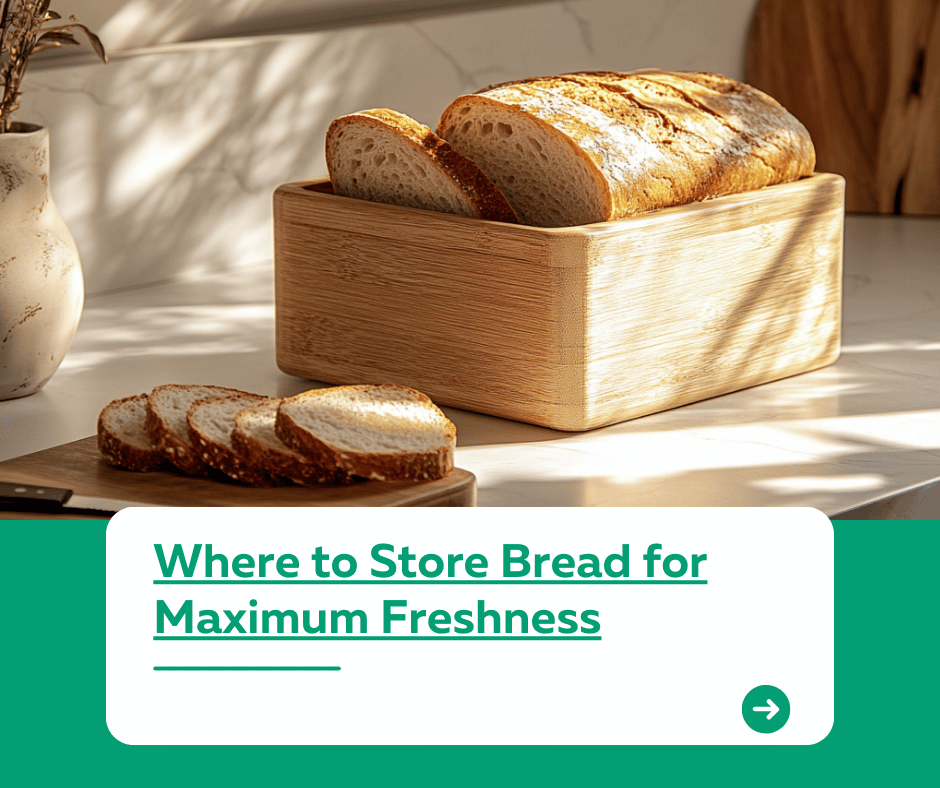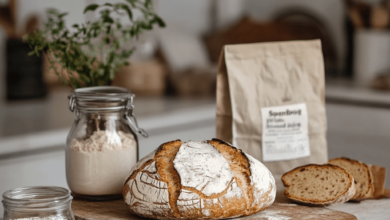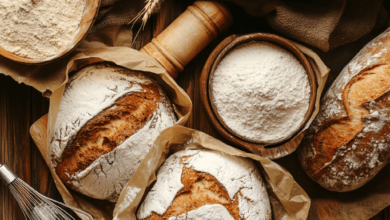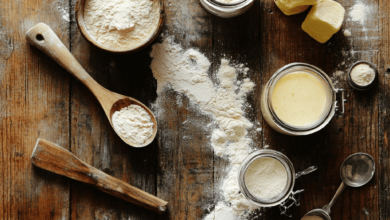Where to Store Bread for Maximum Freshness

Introduction
Have you ever wondered where to store bread to keep it fresh, soft, and delicious for as long as possible? Bread is a staple in many households, but improper storage can lead to staleness or even spoilage. In this article, we’ll explore the best storage methods and locations to preserve your bread’s freshness, whether it’s homemade or store-bought.
1. Why Proper Bread Storage Matters
Storing bread correctly can:
- Prevent it from drying out or becoming stale too quickly.
- Keep mold growth at bay.
- Ensure its texture and flavor remain intact for longer.
Knowing the right place to store your bread can save you from waste and frustration.
2. The Ideal Place to Store Bread
At Room Temperature (Best for Short-Term Storage)
- Location: Keep bread in a bread box or on a countertop, away from direct sunlight.
- Why It Works: Room temperature slows staling without drying out the bread.
- Tips:
- Use a bread box to maintain humidity and airflow balance.
- Store in a paper bag for crusty bread to avoid sogginess.
Freezing (Best for Long-Term Storage)
- Why It Works: Freezing halts the staling process entirely, preserving both texture and flavor.
- How to Freeze Bread:
- Slice the bread to allow you to defrost only what you need.
- Wrap tightly in plastic wrap or aluminum foil.
- Place in a freezer-safe bag to prevent freezer burn.
Avoid Refrigeration
- Refrigerating bread might seem like a good idea, but it actually accelerates staleness due to starch retrogradation. Bread stored in the fridge will lose its texture faster than bread kept at room temperature or frozen.
3. Storing Different Types of Bread
- Crusty Bread: Keep it in a paper bag at room temperature to maintain its crisp crust.
- Soft Sandwich Bread: Use a bread box or plastic bag to retain moisture.
- Homemade Bread: Freeze immediately if you won’t consume it within two days, as it has no preservatives.
4. Common Bread Storage Mistakes to Avoid
- Leaving Bread Uncovered: Exposure to air dries out bread quickly.
- Storing Near Heat Sources: Warmth can lead to mold growth.
- Keeping Bread in Plastic Bags for Too Long: While they trap moisture, plastic bags can make bread soggy if not consumed quickly.
5. How to Revive Stale Bread
If your bread has already started to go stale, here’s how to bring it back to life:
- In the Oven: Wrap the bread in foil and heat at 300°F (150°C) for 10–15 minutes.
- In the Microwave: Wrap in a damp paper towel and microwave for 10–15 seconds for a quick fix.
Conclusion
Knowing where and how to store bread can make all the difference in its freshness and taste. Whether you keep it at room temperature, freeze it for later, or use a bread box, these tips will help you enjoy every slice to the fullest. For more storage tips and kitchen hacks, visit our kuetion.com.




